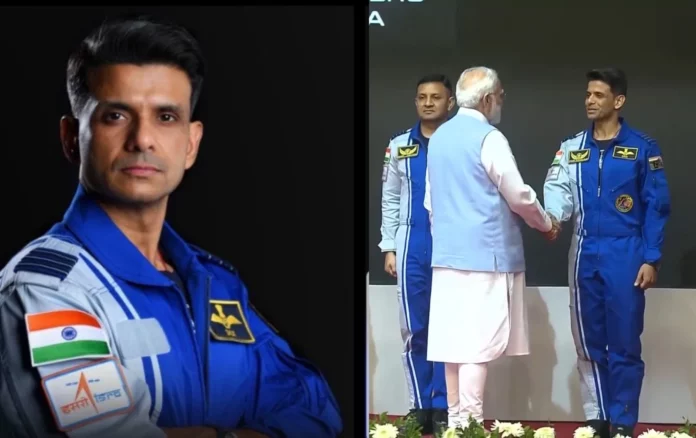NEW DELHI: Indian Air Force Wing Commander Shubhanshu Shukla has been selected as the prime astronaut for the upcoming Indo-US mission to the International Space Station (ISS), the Indian Space Research Organisation (ISRO) has announced.
A joint statement signed between India and the US during the official state visit of Prime Minister Narendra Modi in June 2023 envisioned a joint ISRO-NASA effort to the ISS.
Towards the goal of mounting a joint ISRO-NASA effort, the Human Space Flight Centre (HSFC) of ISRO has entered into a Space Flight Agreement (SFA) with NASA-identified service provider Axiom Space Inc, USA for its upcoming Axiom-4 mission to the ISS, the Indian space agency said on Friday.
A National Mission Assignment Board has recommended two Gaganyatris as prime and backup Mission Pilot for this mission. These include Group Captain Shubhanshu Shukla (Prime) and Group Captain Prasanth Balakrishnan Nair (Backup).
“The assigned crewmembers will be finally approved to fly to the International Space Station by the Multilateral Crew Operations Panel (MCOP),” ISRO statement read.
The recommended Gaganyatris will commence their training for the mission from the first week of August, ISRO said.
During the mission, the Gaganyatri will undertake selected scientific research and technology demonstration experiments on board the ISS as well as engage in space outreach activities. The experiences gained during this mission will be beneficial for the Indian Human Space Program and it will also strengthen human space flight cooperation between ISRO and NASA.
Gaganyaan project envisages a demonstration of human spaceflight capability by launching a crew of 3 members to an orbit of 400 km for a 3-day mission and bringing them back safely to earth, by landing in Indian sea waters.
In February this year, PM Modi announced the names of the four chosen Indian Air Force pilots; Group Captain Prashanth Nair, Group Captain Ajit Krishnan, Group Captain Angad Pratap, and Wing Commander Shubhanshu Shukla who would be part of India’s first human space flight programme. It is slated to be launched in 2024-25.
The four astronauts were trained at Yuri Gagarin Cosmonaut Training Centre in Russia. Prime Minister Narendra Modi, had reviewed the progress of the Gaganyaan mission and bestowed ‘astronaut wings’ to the astronaut-designates at Vikram Sarabhai Space Centre.
The Gaganyaan mission is India’s first human space flight program for which extensive preparations are underway at various ISRO centres.
“India’s success in the space sector is sowing the seeds of scientific temperament in the country’s young generation,” PM Modi said in his address at the Vikram Sarabhai Space Centre .
The pre-requisites for Gaganyaan mission include development of many critical technologies including human rated launch vehicle for carrying crew safely to space, Life Support System to provide an earth like environment to crew in space, crew emergency escape provision and evolving crew management aspects for training, recovery and rehabilitation of crew.
Various precursor missions are planned for demonstrating the Technology Preparedness Levels before carrying out the actual Human Space Flight mission. These demonstrator missions include Integrated Air Drop Test (IADT), Pad Abort Test (PAT) and Test Vehicle (TV) flights. Safety and reliability of all systems will be proven in unmanned missions preceding manned mission.
LVM3 rocket – The well proven and reliable heavy lift launcher of ISRO, is identified as the launch vehicle for Gaganyaan mission.
Human safety is of paramount importance in Gaganyaan mission. In order to ensure the same, various new technologies comprising of Engineering systems and Human centric systems are being developed and realised.
In 2023, in a stellar display of prowess, India soared to new heights with the successful soft landing of Chandrayaan-3 on the South Pole of the Moon and the successful launch of Aditya-L1, India’s first solar mission.
These milestones not only secured India’s standing in the global space economy but also fueled the engines for the private space sector in India.
Among other feats India now aims for setting up ‘Bharatiya Antariksha Station’ by 2035, and sending the first Indian to the Moon by 2040. (ANI)
Also Read: ISRO’s Aditya-L1 completes first halo orbit around Sun-Earth L1 point in 178 days







